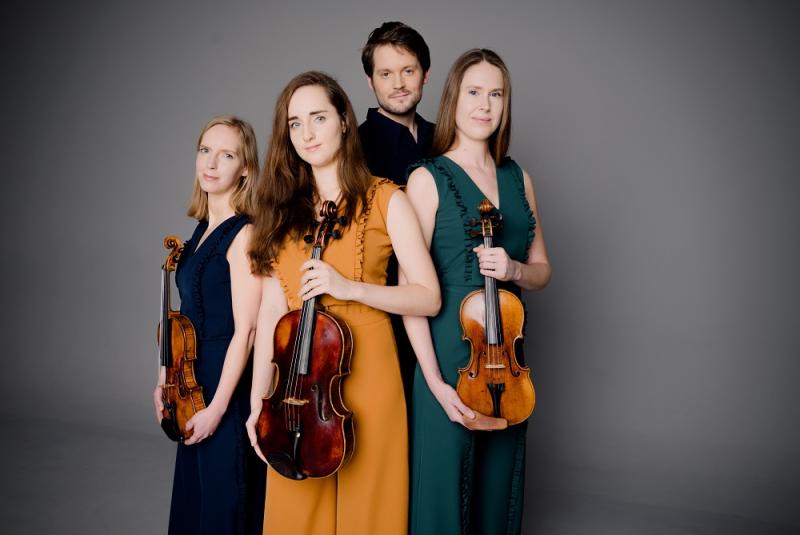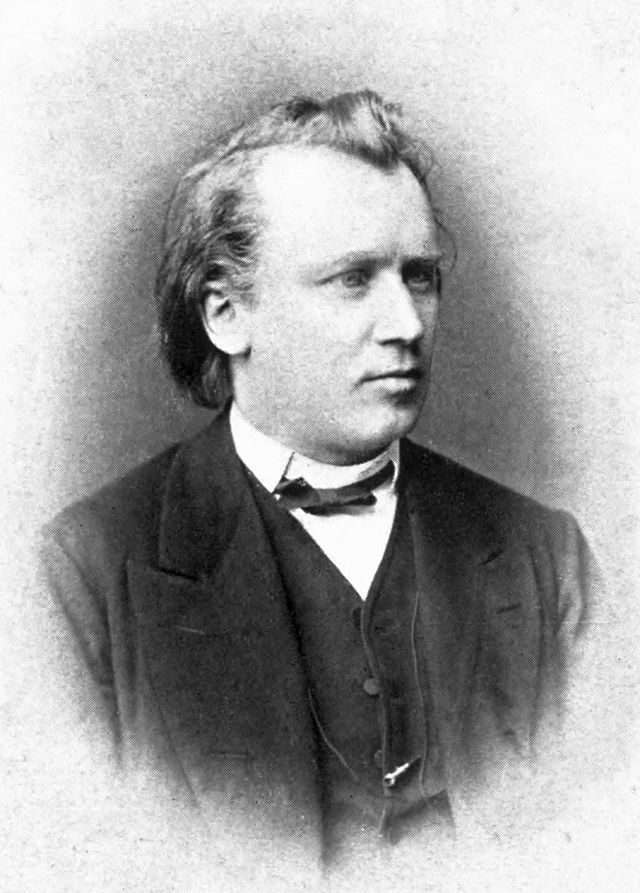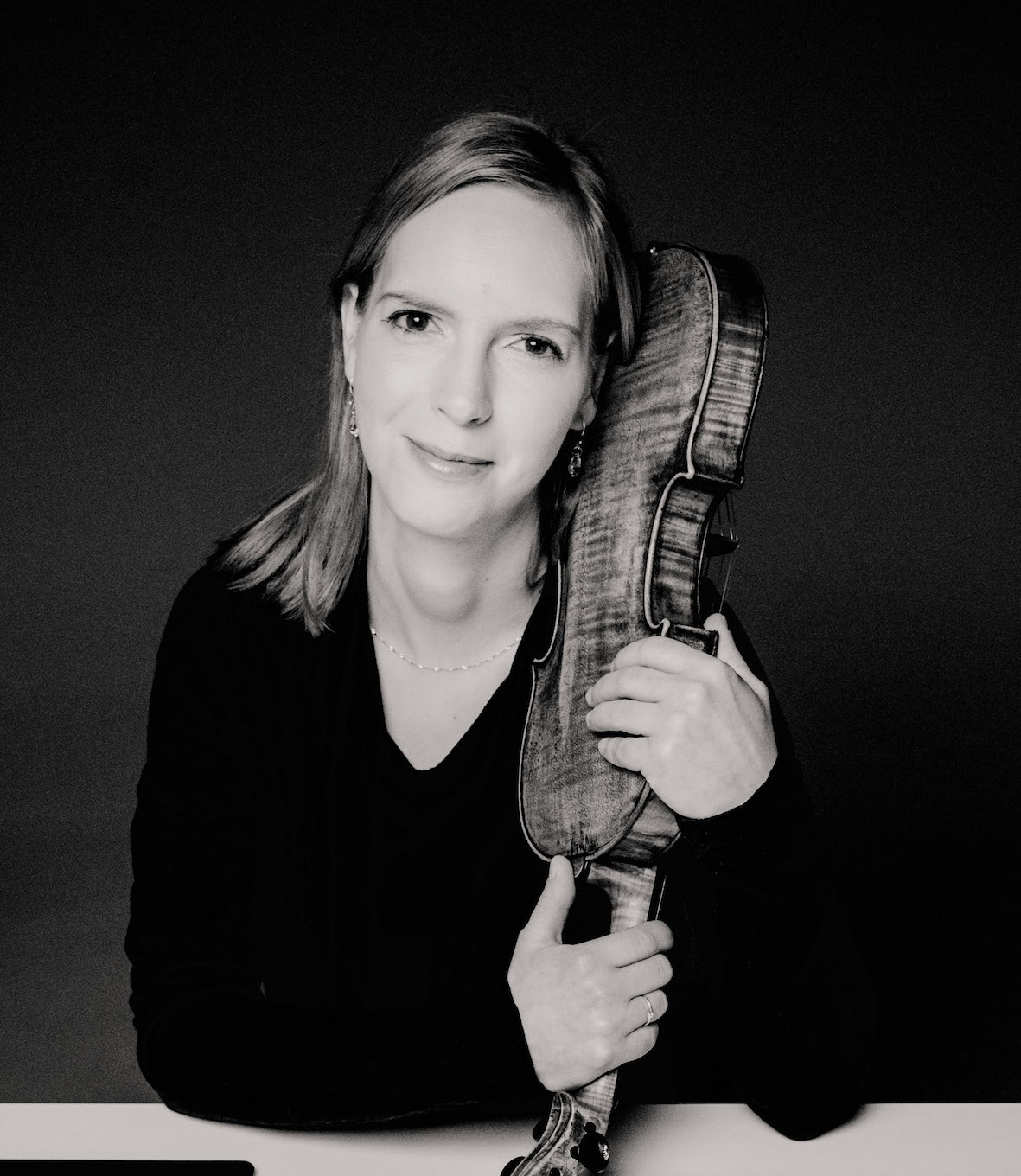Judith van Driel of the Dudok Quartet Amsterdam: 'the more we played Brahms, the more freedom we found' | reviews, news & interviews
Judith van Driel of the Dudok Quartet Amsterdam: 'the more we played Brahms, the more freedom we found'
Judith van Driel of the Dudok Quartet Amsterdam: 'the more we played Brahms, the more freedom we found'
On approaching the elusive and unreachable in four chamber masterpieces

In every life there are moments of great significance. Experiences that stick with us and define our own personal story.
Growing up as a young violinist, one of those defining moments for me was the first time I played a piece by Johannes Brahms. It was his Second Violin Sonata; I was sixteen years old. Of course I had heard Brahms’s music before, but by bringing his notes to life myself I discovered a whole new range of emotions I had never experienced with any other composer. Or even more than that: the music opened up a new, illuminated world to me. Playing Brahms made me feel a little closer to some inexplicable, but undeniable truth, that was being revealed through the notes.
On the other hand I immediately felt how hard it would be to come close to this “truth”. In all of Brahms’s music there is this element of something elusive and unreachable.
Deeply inspired by this experience, I decided to take up the challenge and to become a musician.
Since the foundation of the Dudok Quartet Amsterdam in 2009, Brahms has always been a key composer for us. That’s why we decided to record all of his string quartets, and his second string quintet, for our latest album. Since the Covid-crisis emptied our agendas, we used the opportunity for a profound research into Brahms’s musical world.
 When Brahms was born in 1833, changes in the world of classical music were advancing as quickly as they were in the rest of society. Up until the end of the 18th century, composers wrote “circumstantial music”, often performed by themselves. But along with the development of the classical canon in the 19th century, composers were more and more considered as geniuses who wrote music for eternity. In his Neue Zeitschrift für Musik Robert Schumann started writing about music. When he discovered the young Brahms, he catapulted him into the spotlight, by writing that Brahms was “…singled out to make articulate in an ideal way the highest expression of our time, one man who would bring us mastery, not as the result of gradual development, but as Minerva, springing fully armed from the head of Cronus.” The confidence with which Brahms was appointed the “Beethoven of the romantic age” suddenly put the young composer in a gilded cage. Paradoxically, his dream of becoming a “great” composer was also a burden.
When Brahms was born in 1833, changes in the world of classical music were advancing as quickly as they were in the rest of society. Up until the end of the 18th century, composers wrote “circumstantial music”, often performed by themselves. But along with the development of the classical canon in the 19th century, composers were more and more considered as geniuses who wrote music for eternity. In his Neue Zeitschrift für Musik Robert Schumann started writing about music. When he discovered the young Brahms, he catapulted him into the spotlight, by writing that Brahms was “…singled out to make articulate in an ideal way the highest expression of our time, one man who would bring us mastery, not as the result of gradual development, but as Minerva, springing fully armed from the head of Cronus.” The confidence with which Brahms was appointed the “Beethoven of the romantic age” suddenly put the young composer in a gilded cage. Paradoxically, his dream of becoming a “great” composer was also a burden.
No wonder that writing a string quartet, the genre in which Beethoven excelled, was such a struggle for Brahms. He remarked to a friend that he had “destroyed at least twenty string quartets” before releasing the first two of Opus 51 (the composer pictured above in 1872, the year before he composed the three string quartets). Brahms spent at least eight years composing these quartets. The String Quartet in C minor developed into the most emblematic prototype of his musical language: an uninterrupted four-voice discussion, embedded in a dense framework of which the thematic material was elaborated to perfection. When we play this piece, we can often feel the composer’s struggle with the material.
String Quartet No. 2 leaves some of this struggle behind, affording more space for the gentler side of Brahms, and culminating in a last movement that is influenced by Hungarian popular music. The third string quartet was composed relatively quickly in the following year. Brahms was about to add a finishing touch to his First Symphony. While lingering on the finalization of that other proof of competence, he found inspiration for a different composition at his holiday home in Ziegelhausen. He scribbled down his Third String Quartet in just a few weeks. Brahms advised embedding it in a programme with music by Mozart and Haydn. This work became one of his personal darlings and shows his great affection for the early Viennese classics.
 The Second String Quintet is one of his last works, and it’s fairly different from the quartets. Brahms had nothing more to prove, he felt more free to write what he wanted. The piece is full of joy and energy. The addition of an extra violist leaves us as players more space to focus on individual freedom than in his string quartets.
The Second String Quintet is one of his last works, and it’s fairly different from the quartets. Brahms had nothing more to prove, he felt more free to write what he wanted. The piece is full of joy and energy. The addition of an extra violist leaves us as players more space to focus on individual freedom than in his string quartets.
For me as a Brahms-performer, freedom is a recurring keyword. As a string quartet, we are part of a tradition of performing practice. And every tradition has its values, but also its possible pitfalls. When you just stick to your tradition, you might be less free than you think you are.
Searching for an interpretation that coincides with who we are as the Dudok Quartet, we thought it would be worth questioning our history and our habits. We asked ourselves: why do we play the way we do? How much freedom do we actually allow ourselves in approaching this “ancient” music? And how can we increase our freedom within the limitations of the musical “text”?
The great thing about being a professional string quartet is the opportunity to dive into these questions as deep and as long as you want. We started playing the music, and by playing I mean we started to approach the music as a game. We played this game for months and months. And the more we played it, the more freedom we found.
Watch the trailer for the Brahms recording
One of the things we did to find our freedom was changing our instrumental setup. We started playing with unwound gut strings. These strings forced us to rethink our approach to sound production, resulting in a more transparent sonority. And this transparency was extremely helpful for us in our search for freedom in the dense structures of Brahms’ music.
We also experimented with flexible tempi within the movements, playing with less vibrato and using portamenti as a means of expression. Not because we want to replicate the performance practice of Brahms’s time, but because we felt it adds to the meaning of this music today.
My ambivalent feelings about Brahms’ music have never changed. Unlike the approach to other composers, performing Brahms always contains a certain amount of struggle. As a performer, you always have the feeling you have nearly found the ‘truth’, just not yet. But by working on this album extensively, I came to the conclusion that the ‘truth’, if one can speak of that in the first place, partly lies within the struggle itself.
Brahms’s music is an incredibly masterfully constructed puzzle, and every time you play, you find new jigsaw pieces that you haven’t seen before. Every time I play Brahms, I catch a glimpse of this great, immediate significance that can’t be put into words.
Explore topics
Share this article
The future of Arts Journalism
You can stop theartsdesk.com closing!
We urgently need financing to survive. Our fundraising drive has thus far raised £49,000 but we need to reach £100,000 or we will be forced to close. Please contribute here: https://gofund.me/c3f6033d
And if you can forward this information to anyone who might assist, we’d be grateful.

Subscribe to theartsdesk.com
Thank you for continuing to read our work on theartsdesk.com. For unlimited access to every article in its entirety, including our archive of more than 15,000 pieces, we're asking for £5 per month or £40 per year. We feel it's a very good deal, and hope you do too.
To take a subscription now simply click here.
And if you're looking for that extra gift for a friend or family member, why not treat them to a theartsdesk.com gift subscription?
more Classical music
 Kilsby, Parkes, Sinfonia of London, Wilson, Barbican review - string things zing and sing in expert hands
British masterpieces for strings plus other-worldly tenor and horn - and a muscular rarity
Kilsby, Parkes, Sinfonia of London, Wilson, Barbican review - string things zing and sing in expert hands
British masterpieces for strings plus other-worldly tenor and horn - and a muscular rarity
 From Historical to Hip-Hop, Classically Black Music Festival, Kings Place review - a cluster of impressive stars for the future
From quasi-Mozartian elegance to the gritty humour of a kitchen inspection
From Historical to Hip-Hop, Classically Black Music Festival, Kings Place review - a cluster of impressive stars for the future
From quasi-Mozartian elegance to the gritty humour of a kitchen inspection
 Shibe, LSO, Adès, Barbican review - gaudy and glorious new music alongside serene Sibelius
Adès’s passion makes persuasive case for the music he loves, both new and old
Shibe, LSO, Adès, Barbican review - gaudy and glorious new music alongside serene Sibelius
Adès’s passion makes persuasive case for the music he loves, both new and old
 Anja Mittermüller, Richard Fu, Wigmore Hall review - a glorious hall debut
The Austrian mezzo shines - at the age of 22
Anja Mittermüller, Richard Fu, Wigmore Hall review - a glorious hall debut
The Austrian mezzo shines - at the age of 22
 First Person: clarinettist Oliver Pashley on the new horizons of The Hermes Experiment's latest album
Compositions by members of this unusual quartet feature for the first time
First Person: clarinettist Oliver Pashley on the new horizons of The Hermes Experiment's latest album
Compositions by members of this unusual quartet feature for the first time
 Gesualdo Passione, Les Arts Florissants, Amala Dior Company, Barbican review - inspired collaboration excavates the music's humanity
At times it was like watching an anarchic religious procession
Gesualdo Passione, Les Arts Florissants, Amala Dior Company, Barbican review - inspired collaboration excavates the music's humanity
At times it was like watching an anarchic religious procession
 Classical CDs: Camels, concrete and cabaret
An influential American composer's 90th birthday box, plus British piano concertos and a father-and-son duo
Classical CDs: Camels, concrete and cabaret
An influential American composer's 90th birthday box, plus British piano concertos and a father-and-son duo
 Cockerham, Manchester Camerata, Sheen, Martin Harris Centre, Manchester review - re-enacting the dawn of modernism
Two UK premieres added to three miniatures from a seminal event of January 1914
Cockerham, Manchester Camerata, Sheen, Martin Harris Centre, Manchester review - re-enacting the dawn of modernism
Two UK premieres added to three miniatures from a seminal event of January 1914
 Kempf, Brno Philharmonic, Davies, Bridgewater Hall, Manchester review - European tradition meets American jazz
Bouncing Czechs enjoy their Gershwin and Brubeck alongside Janáček and Dvořák
Kempf, Brno Philharmonic, Davies, Bridgewater Hall, Manchester review - European tradition meets American jazz
Bouncing Czechs enjoy their Gershwin and Brubeck alongside Janáček and Dvořák
 Solomon, OAE, Butt, QEH review - daft Biblical whitewashing with great choruses
Even a top soprano and mezzo can’t make this Handel paean wholly convincing
Solomon, OAE, Butt, QEH review - daft Biblical whitewashing with great choruses
Even a top soprano and mezzo can’t make this Handel paean wholly convincing
 Two-Piano Gala, Kings Place review - shining constellations
London Piano Festival curators and illustrious friends entertain and enlighten
Two-Piano Gala, Kings Place review - shining constellations
London Piano Festival curators and illustrious friends entertain and enlighten
 Echo Vocal Ensemble, Latto, Union Chapel review - eclectic choral programme garlanded with dance
Beautiful singing at the heart of an imaginative and stylistically varied concert
Echo Vocal Ensemble, Latto, Union Chapel review - eclectic choral programme garlanded with dance
Beautiful singing at the heart of an imaginative and stylistically varied concert

Add comment